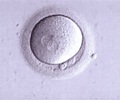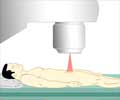Americans seem to be increasingly attracted by a new ultrasound treatment for prostate cancer.
It is yet to be approved by the Food and Drug Administration (FDA), but people are willing to travel outside the country to undergo the operation and cough up huge money in the process.The technique, called high-intensity focused ultrasound, or HIFU (pronounced HIGH-foo) attacks the cancerous tissue by heating the prostate to temperatures near boiling instead of the more traditional surgery or radiation.
Many travel across the borders to Mexico where a US-based firm is offering the treatment, which is incidentally approved in the European Union and Canada too.
But many cancer experts are skeptical. They argue that there is not yet enough evidence that the treatment stops cancer over the long run and they say the side effects are not as minimal as claimed.
The American Urological Association too says there is too little long-term data to evaluate HIFU.
The head of the prostate cancer program at Memorial Sloan-Kettering Cancer Center, Dr. Peter T. Scardino, said the procedure might prove useful for some special cases, but “for the treatment of the average ordinary prostate cancer, I think it’s a second-class form of therapy.”
Advertisement
The primary treatments for prostate cancer have an impotence rate approaching 50 percent, as well as a lesser risk of urinary incontinence.
Advertisement
Some question such claims.
Dr. Cary N. Robertson, a Duke urologist who has studied HIFU, said published research suggested that up to 50 percent of patients who undergo the therapy might lose all or part of their sexual function.
The company says that improvements in the equipment since those studies were completed have reduced impotence rates. There are also questions about whether HIFU’s long-term cancer cure rates are as high as those with standard therapies.
Citing a shortage of long-term data on the procedure, Dr. Scionti acknowledged, “We don’t know what the results are in 10 or 15 years.”
In the treatments done in Puerto Vallarta, Mexico, after patients are sedated and given spinal epidurals (anesthesia), they lie on a surgical table with their legs in stirrups. The treatment is delivered through a probe inserted into the rectum.
During the treatment, doctors monitor a video screen image of the prostate. Because each dose of highly focused ultrasound is delivered in short spurts to small areas, it can take several hours.
A patient described the procedure as “a breeze” and said the only discomfort was the catheter, inserted directly into his bladder through an incision below his navel, that all patients wear for about two weeks, reports the New York Times.
There is mixed reaction though, some claiming satisfied, some others feeling cheated.
The company is also attracting attention for its aggressive recruitment of American doctors who will go through training and perform the treatments. The company charges patients $25,000 to $30,000, a fee that is usually not reimbursed by insurance. Of that, the company pays the doctors $5,000 to $7,500 — several times what physicians earn for conventional prostate cancer procedures in the United States.
Critics worry that financial motives might influence medical decisions.
Dr.Suarez defends the company’s fees, which are less than the cost of some other prostate cancer treatments. And he says he recommends the treatment because he believes that it works as well as surgery or radiation, with fewer side effects.
Nearly a quarter-million cases of prostate cancer are diagnosed in American men each year, and newer detection methods and increased vigilance mean that more cases can be caught while the disease is still curable.
Even earlier detection is expected with the advent of new genetic tests, like one announced Wednesday last, that can identify which men are at high risk.
Despite such advances, though, doctors still cannot predict which cases of cancer will spread. And so most cases are treated, even though most prostate cancer is slow-growing and in many cases would be harmless if left alone.
Source-Medindia
GPL/S





![Prostate Specific Antigen [PSA] Prostate Specific Antigen [PSA]](https://www.medindia.net/images/common/patientinfo/120_100/prostate-specific-antigen.jpg)





